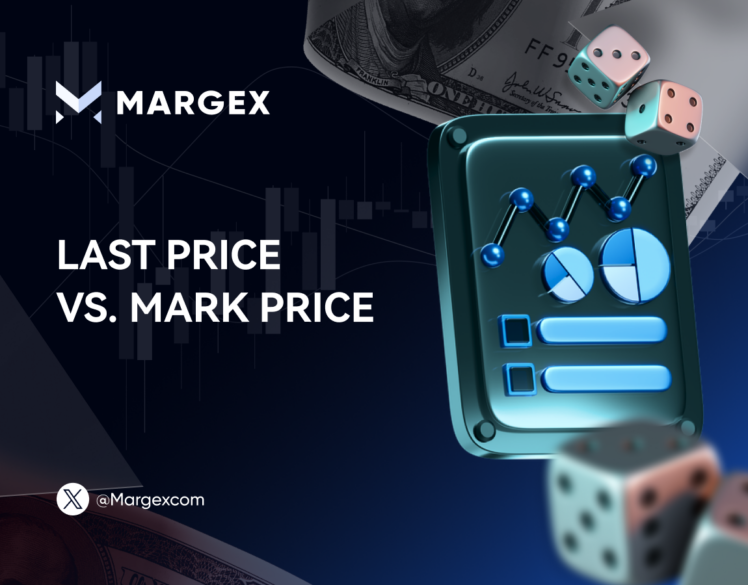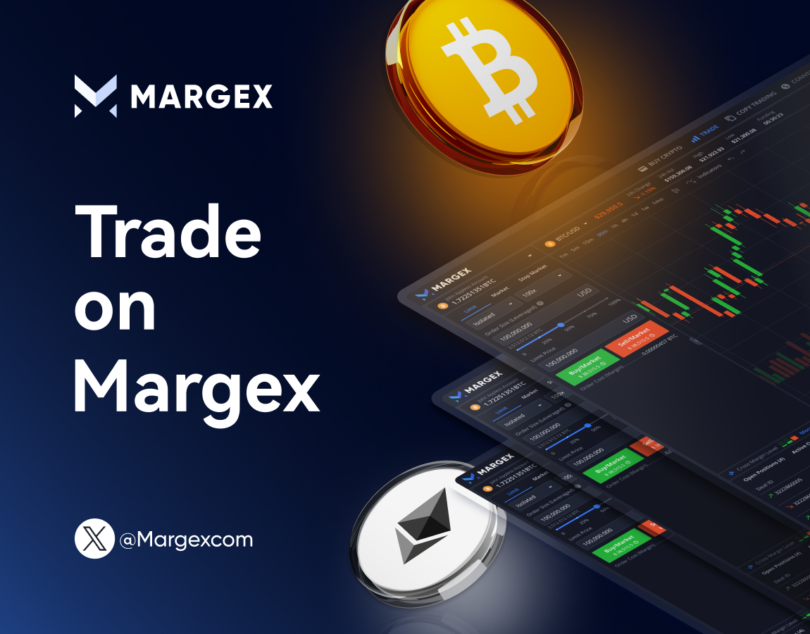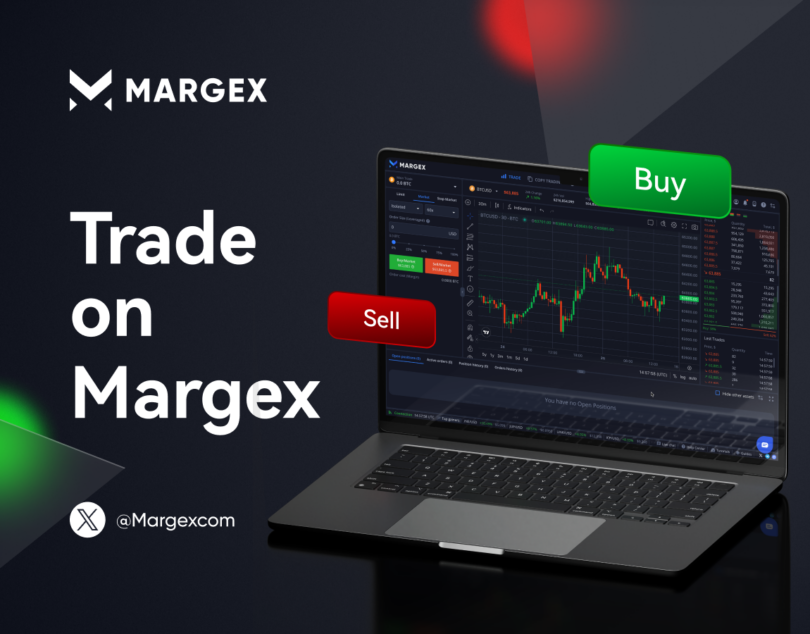Last Price vs. Mark Price: The Key Differences in Trading

Financial markets remain fluid environments in which prices continue their upward or downward movements according to supply and demand shifts along with economic metrics, international events, and market sentiment. Knowledge about price in crypto changes remains essential for traders together with investors and analysts when making their investment decisions. Last Price and Market Price represent two vital elements that cause frequent confusion for traders within the financial markets. These terms seem similar but describe separate market concepts that shape trading plans and final performance results.
The Last Price in crypto denotes the exact value at which the newest trade between buyer and seller produced their transaction. The last price shows the value that both parties in a transaction agreed to after their negotiation. The Market Price functions as the current rate at which traders can transact assets either by purchasing or selling in marketplaces. The market price reacts instantly based on the latest orders between buyers and sellers on the order book.
What is the Last Price?
The last price represents the financial value paid during the previous asset trade. A historical transaction between a buyer and seller ends with the agreed-upon final value that becomes the Last Price. The last price recorded does not provide a real-time valuation of market conditions at the present. A lasting period without new trades keeps the Last Price static despite large-scale market sentiment and supply-demand changes.
How the Last Price is Determined?
The Last Price depends exclusively on recorded trade completion. The price gets updated exclusively during trading executions that directly link it to deals performed by market participants. The Last Price will stay stagnant when new trades do not happen leading to confusion in markets with low activity. The current market value of thinly traded stocks or cryptocurrencies might not properly match their accurate prices because of the Last Price method.
Role of Last Price in Different Markets
During stock market activities the Last Price acts as the primary indicator demonstrating the worth of newest trading deals. Historical tracking and price trend analysis heavily rely on the Last Price as a fundamental measurement metric.
The cryptocurrency marketplace demonstrates intense price fluctuations due to its known volatile nature. The Last Price loses its value fast in this market mainly because of swift price changes and low trade volume fluctuations.
The forex market runs trading operations throughout 24 hours every day except weekends. In this market segment, the Last Price carries little weight because the Market Price receives instant updates through actual time bid-request information.
How Last Price is Used?
Historical data analysis starts its analysis with the Last Price. The Last Price serves as an essential monitoring system that tracks asset value evolution in financial documents trading records and price in trading charts. The Last Price serves crucial value to investors who hold assets for extended periods because it shows their historical evolution for detecting regular changes along with unusual movements.
Example:
Users can trade BTC derivatives on the Margex crypto exchange through which the most recent trading price reached $100,000. The latest deal of $100,000 serves as Kraken’s Last Price for this particular contract.
The Last Price function identifies the latest executed trade on every cryptocurrency futures exchange where traders perform their trading activities.
Crypto traders usually select the Last Price as their key factor for initiating trading orders. The logical basis for using this approach is that it enables traders to make their trading decisions and perform analysis with data rendered on the chosen trading platform.
This method guarantees the successful execution of orders at the specified price entry points because it disregards all price fluctuations between different trading platforms.
Understanding Market Price
The genuine valuation of an asset emerges when buyers and sellers exchange it in present market conditions. The Market Price presents the current market value by showing present supply and demand movements while the Last Price depends on past transaction records. The system maintains its real-time update by considering all current bid and ask order data from the order book.
How Market Price is Determined?
Market Price results from the continuous negotiation between market agents who are both buying and selling. The market price emerges when buyers place their highest bidding price and sellers place their lowest selling price. Market Price shifts constantly even when trades do not take place because it depends on how deep and liquid the order book becomes. The Market Price undergoes significant fluctuations because of several elements like futures trading activity levels market emotions and information-related developments.
Role of Market Price in Different Markets
The stock market uses Market Price as its fundamental factor to establish the following trade rate. The calculation of the bid-ask spread depends on the market price because it shows how efficiently trading takes place in a market environment.
The Cryptocurrency Market relies on Market Price as its main mechanism to monitor price changes in real-time since cryptocurrencies show significant market swings. Market Price plays an essential role in trading operations specifically for day traders along with arbitrageurs.
The Forex market displays high liquidity together with constant futures trading operations as its main characteristics. The Market Price constantly shifts to show current foreign exchange rates that originate from worldwide economic activity.
How Market Price is Used?
Market orders demand the Market Price data for their execution at the highest available price point immediately. Market Price serves traders for instant decision-making when they decide to initiate or terminate their trading positions. The Market Price serves two essential purposes because it enables exchanges to determine asset values for fair trading operations.
Example:
BTC derivatives traders experience short-lived differences across platforms because of Bitcoin price drops while conducting trades on the Margex exchange. A steep market downturn will bring about temporary differences between the Last Price displayed on Kraken and the Mark Price amounting to a few dollars. A brief price difference emerges from the converging factors which exert influence on exchange market movement.
The price on Margex can briefly fall under the theoretical definition of Mark Price. A trader’s position can be negatively affected by price fluctuations based on which reference price they have selected to trigger their trade.
The calculation method for Mark Price operates to minimize price volatility that stems from major trades together with market instability periods. The use of multiple data sources enhances protection against price manipulation because liquidations activate according to Mark Price calculations.
When to Use Each Last Price and Mark Price?
The selection process for triggering orders through price references demands a detailed examination and intentional choice-making.
The Mark Price difference between the Last Price remains small and brief in most big liquidity trading platforms. One needs to make assessments about which price reference best suits their trading needs when specific conditions arise.
The Last Price serves as an advantageous execution method in crypto because it approaches expected transaction prices effectively within conditions of high market liquidity. Placing a Take Profit (TP) order for Solana SOL at $100 through Last Price execution will trigger your order when market prices reach $100. When you implement orders based on Mark Prices you could receive a different execution price because this method will not conform precisely with the Last Price.
The Mark Price works better than the last price for trading on a platform with low market liquidity. The Mark Price protects trades from price fluctuation instability because it reacts less dramatically than the last traded price to low trading volume markets. The Index Price serves as a more dependable metric to evaluate market conditions thus the Mark Price stands consistent with this measure.
Liquidation through the Mark Price serves as one major drawback of selecting the Last execution price. Your trading position may be liquidated before stop-loss execution because the platform uses the Mark Price. A position will get automatically liquidated through Mark Price action even if your stop-loss has not been triggered because the Mark Price exceeds the liquidation threshold beforehand.
The risk enters at peak levels when you place your stop-loss order near your liquidation point because minor price fluctuations may cause a premature liquidation event.
In conclusion, choosing between the Last Price and Mark Price in crypto should be based on several factors:
- The liquidity of the contract you are trading.
- The frequency of significant and unexpected price movements in your chosen asset.
- The likelihood of divergence between the Last Price and Mark Price.
- The methodology used to calculate the Mark Price.
- The stability and reliability of the Mark Price compared to the Last Price.
4. Key Differences Between Last Price and Market Price
| Factor | Last Price | Market Price |
| Definition | Price of the last executed trade | Current price based on bid/ask orders |
| Update Frequency | Changes only when a trade occurs | Changes continuously |
| Reflection of Demand | May not show real-time supply/demand | Reflects immediate buy/sell interest |
| Use in Trading | Historical data analysis | Real-time decision-making |
| Price Fluctuation | Static if no new trade occurs | Moves even without trade execution |
| Relevance | Useful for trend analysis | Essential for active trading |
How Does Last Price and Market Price Impact Traders?
Impact on Day Traders
The Market Price in crypto stands as a more vital factor for day traders above everything else including the Last Price. Real-time data-dependent day traders leverage the Market Price as their primary source for making quick trading decisions because it shows market conditions at present. Decision-making through Price execution produces unfavorable trade results because it cannot capture fast-changing market conditions, especially in volatile and illiquid situations.
Impact on Long-Term Investors
Long-term investors employ the Last Price to monitor their historical performance although they rely on Market Price to analyze time-based trends. Determination of entry and exit points benefits from information provided by the Market Price although it retains its relevance. Investors need to refer to the Market Price before completing transactions involving shares because it determines their actual worth during purchase and sale activities.
Impact on Algorithmic Trading
Algorithmic trading execution in crypto requires the real-time use of the Market Price. Trading bots apply the current trade market prices to execute orders by seizing market weaknesses. The Last Price functions both as a trade confirmation tool and tracks market execution information.
Market participants who want to understand Spot and Futures Trading should learn about their fundamental dissimilarities along with appropriate evaluation indicators.
Trading with spots differs wholly from trading futures by design. With spot trading one asset automatically gets exchanged immediately for another asset after payment occurs and asset transfer occurs promptly following payment. Future contracts provide the framework for purchasing assets at fixed prices while requiring payment and transfer to happen at a predetermined future date.
The delivery of physical items in crypto does not occur in cryptocurrency futures because these deals involve the use of digital assets. Settlement of these contracts takes place at expiration since any profit or loss becomes cash payments.
Essential Price Metrics in Futures Trading: Index, Mark, and Last Price
The pricing system in futures markets consists of unique references that perform particular duties. The three price features in futures trade are index price mark price and last price but show minimal variations between them.
Mark Price vs. Index Price
The actual market price that guides futures contracts stands as the index price for the underlying asset. A mechanism calculates this price through averaging between the underlying asset or index components.
A futures contract receives its theoretical value through the procedures that determine the mark price evaluation. The calculation produces the mark price by using the index price to incorporate elements that include interest rates and dividends and carrying costs and risk adjustments.
Risks and Common Misconceptions
Assuming Last Price = Market Price
Error sharing between traders frequently occurs when they consider the Last Price equal to the Market Price. Significant inconsistencies usually appear in markets that have low liquidity because the Last Price often fails to match present supply and demand levels accurately.
Using Last Price for Order Execution
The execution price when using the Last Price as an order placement basis is likely to be dissatisfactory. A market order against the last trade may produce finalization at an unexpected price level when the Market Price moves significantly since the previous transaction.
Market Manipulation Risks
Market manipulation techniques through spoofing activities that create fake orders and wash trading operations depicting phony trades will alter both the Last Price and the Market Price figures. Verification of prices should be done through various data points due to the essential need for caution in trading.
Conclusion
The knowledge of the differences between the Last Price and the Market Price in crypto serves as an essential requirement for those who want to trade or invest successfully. The Market Price reveals current market trends but traders need the Last Price for analyzing market performance from the past. Traders along with investors need to make strategic choices between Last Price and Market Price based on their operational market and investment approach. Platforms like Margex offer user-friendly margin trading tools that help traders monitor both Last and Market Prices in real-time.




